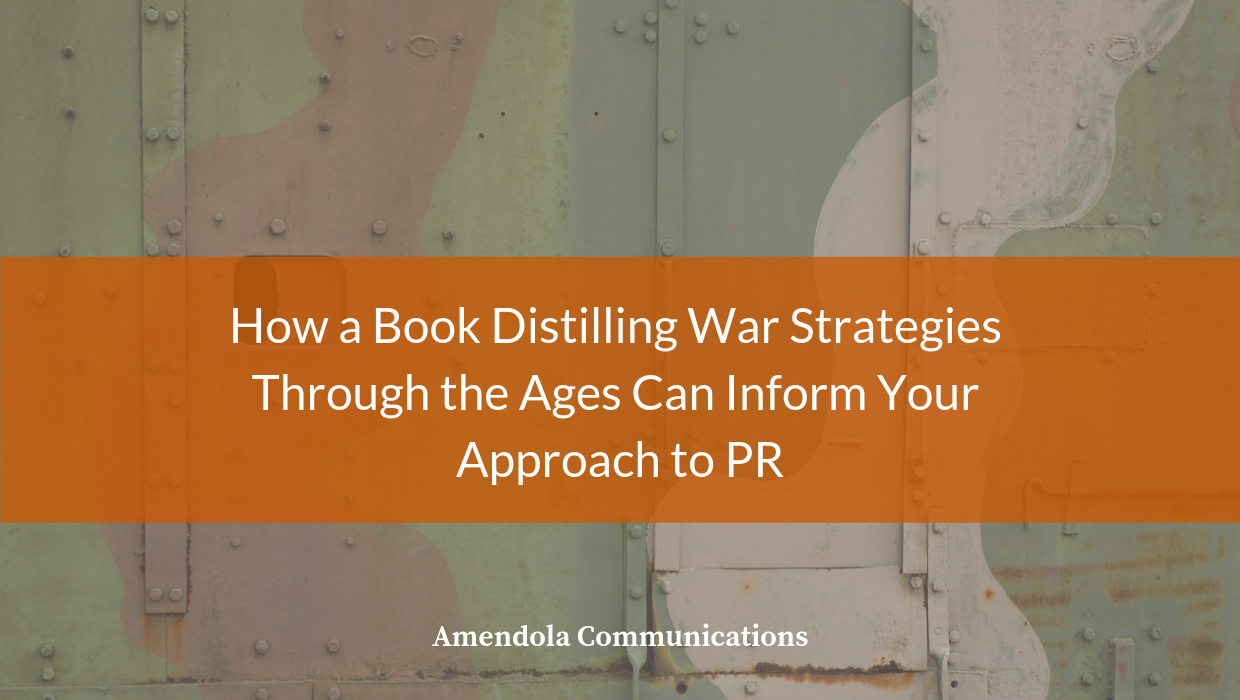In the months following the fall of Saigon and America’s exit from Vietnam, military personnel at the U.S. Naval War College studied the classics to find answers to the humiliating defeat, according to John Lewis Gaddis, Yale professor, historian and author of the book, “On Grand Strategy.”Gaddis’ book explores war strategies, and the leaders behind them throughout history from Xerxes, Pericles, Octavian, Elizabeth I, Lincoln, Wilson, Franklin Roosevelt and others to the great thinkers who informed such strategies, like Sun Tzu, Virgil, St. Augustine, Machiavelli, the Founding Fathers, Clausewitz, Tolstoy, F. Scott Fitzgerald and Isaiah Berlin.
While primarily a book about war and leadership, I found application for why and how companies should communicate.
There are a few things that we’ll want to ponder on this journey, thanks to Professor Gaddis:
Is it better to be a hedgehog (the person with the big idea or doing one thing really well) or a fox (someone good at a lot of little things)?
How does a PR team align aspirations (or ends), which are unlimited, with capabilities (means), which are finite?
How do time, space and scale factor into PR strategy?
Fox vs. hedgehog
Berlin the philosopher and World War II political theorist for Great Britain first wrote about the fox and the hedgehog, positing which possesses the finer quality: Is it better to have the fox’s sensitivity to its surroundings or a hedgehog’s sense of direction? He concludes that people should draw upon both. A compass is necessary to know where you’re going, but you still need to watch what you may step into.
If you were to ask Gaddis, however, he might say that the hedgehog is the one who can articulate a soundbite for media interviews, but the fox may share too many ideas or points of view to be effective. One can draw the conclusion, then, that it’s up to the PR people executing a strategy to leverage the executive with the right intellect and temperament for the right opportunity.
Preparation, delegation and execution
Besides the right PR approach and source, the necessity of preparation and delegation are paramount.
Elizabeth I of England, for example, didn’t try to manage so many things without delegating to people closest to a situation unlike her rival Philip II of Spain who micromanaged, Gaddis writes. He adds: The higher one rises in an organization, the thinner the air gets, which can cloud judgment. Prudent leaders reflect on everything that could happen in a given campaign or situation but aren’t paralyzed by the process. They align aspirations with capabilities.
It’s great to aspire being in The Wall Street Journal, but if a company doesn’t have the market presence, customers and problem-solving stories to share, it can be a futile exercise while spending the time targeting the publications whose audiences can garner sales is the more effective choice.
Don’t let the ends become the means
As Napoleon plodded deeper into Russia, Gaddis relates, there came a point where he apparently forgot his mission. He had acquired so much territory, and pressed his campaign further and further, that he ultimately loved war for itself and not as a means to an end.
Getting tons of placements for the sake of getting placements may check off a box on a list, but if they don’t move the needle of your PR program and communication goals, then they are for naught. Don’t let your PR program become Salamis, as for Xerxes, or Tarutino for Napoleon.
Use common sense and humility
Gaddis cites Sun Tzu (“The Art of War”), who advises to avoid the enemy where he is toughest, and to pursue where weakest. In a PR context, that might mean pursuing low-hanging “media” fruit for a time until you have refined your story and built a portfolio of coverage for attacking the “harder” publications. Maximizing those initial placements, via social networking and content marketing, can prepare you to focus on the national and business media when the time is right.
Furthermore, don’t be afraid to humble yourself to get the job done. John Quincy Adams did as much, Gaddis writes. Adams, the scion of a Founding Father and one from whom so much was expected in life, went from being president to congressman, but in doing so, used the latter station as a platform to raise the slavery issue, eventually passing the mantle to Abraham Lincoln.
I realize I’m at risk of oversimplifying the connection to PR here, but I think there is some merit: Taking informational interviews with reporters in spite of such encounters not resulting in coverage can be valuable. Demonstrating a willingness to work with reporters on their schedules and in their context can go a long way toward building the credibility and trust necessary that will result in opportunities down the road.
Use competitors to draw awareness to your issue(s)
The Lincoln/Douglas debates showcased a well-known Senator Stephen Douglas against the upstart Lincoln, who had not achieved much at that point of his career, Gaddis writes. But Lincoln used those debates to grow his awareness and renown, and focus people’s attention on slavery.
In much the same way, companies should look to the issues of our day social determinants of health, clinician burnout, patient experience, patient access to care, and reducing waste and be willing to speak out on their positions and get their customers to do the same even if it means they are part of broader stories that include competitors.
Time, space and scale are things that generals consider. The Russians retreated from Moscow, in seeming defeat, to draw Napoleon deeper into their country’s heartland. They used time, space and scale to mete out victory. But time, space and scale also are considerations for company leaders and their PR teams as they figure out how best to communicate their value to their audiences and the marketplace at large.
